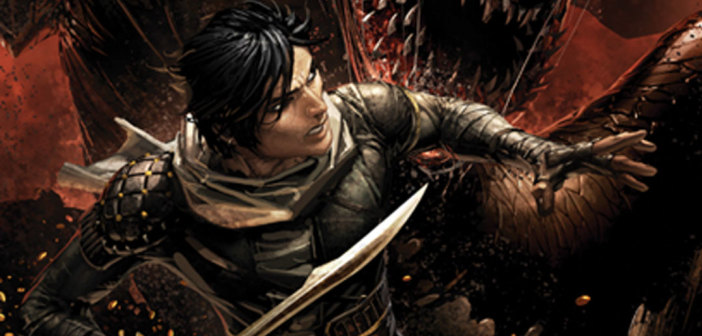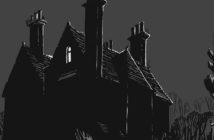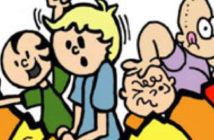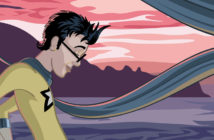It’s best to toss aside everything learned from Walt Disney’s Aladdin before opening the pages of Radical’s new release, Aladdin: Legacy of the Lost. Yes, the basics of the plot are the same: there’s a thief roaming the streets of ancient Arabia, he’s the child of a special destiny, and he’s enlisted by an evil wizard to unearth a harmless-looking lamp in exchange for a reward of riches. It sounds simple enough, right?
Well, it is, but that is a strength of this book rather than a weakness. Writer Ian Edginton doesn’t deviate from the uncomplicated fairy tale quality of the Aladdin legend for the sake of appearing “deep,” but rather he tilts the story’s angle away from the children’s version we’re all familiar with, and towards an adult readership.
The book opens by introducing the antagonist of the story, Qassim, a malicious sorcerer who is stalking Aladdin because of his suspicion that the young thief has the ability to fulfill his wish: the retrieval of the mystical lamp we’re all so familiar with. He hires a duo of thugs to unearth as much information on Aladdin as possible, who turns out to be the son of a beggar woman who gave birth to the him in a brothel. Aladdin’s father is unknown, at least to us. After the thugs give Qassim all of their information, he discards them in a vicious (albeit enjoyable) way.
The scene shifts to our first encounter with Aladdin: he’s young, handsome, charming, and sports a bit of a temper. First he swindles a group of roughneck gamblers before retreating to the brothel where he was raised. He’s clearly someone without any direction, and Edginton is successful in making the misguided kid a compelling young hero for us, despite the fact that no one in the pages of the story feel he’s worth much, but isn’t that how it always goes?
He is eventually lulled into helping Qassim steal the lamp from its resting place, the sorcerous city of Aramaspi, and after plucking away the lamp and as much treasure as he can carry, the sorcerer tries his best to rid himself of Aladdin the same way he did the thugs at the beginning of the book. But he fails, and Aladdin is left trapped in Aramaspi with no company other than the Djinn that inhabits the lamp, who grants Aladdin the fabled three wishes.
Aladdin: Legacy of the Lost unfolds at a rapid pace, which is both smart and a little disappointing. The book is not boring: it’s action-packed, and I can’t help but root for the conflicted Aladdin that Edginton has written. The kid is sullen and wayward at times, but when fortune is calling, he effortlessly summons up more than enough pluck to see him through his trials and tribulations. But the second half of the issue feels a bit rushed; I would have liked very much to see Aladdin explore more of the subterranean city where the lamp is housed. But he was quickly in and quickly out, which is a shame when considering the outstanding artwork of Patrick Reilly.
The classic Djinn trapped in the lamp is introduced at the end of the book, and I don’t know who called the shots on the creature’s art direction, but kudos to whoever did. This is not a bubbly Barbara Eden or Robin Williams character, but a true demon from Middle Eastern mythology and the fiery red beast looks outstanding. The entire book does—artist Reilly put a lot of work into making this comic look epic, and he is nothing short of successful.
There are two more issues of Aladdin: Legacy of the Lost, and I look forward to their release. I hope that Ian Edginton and Patrick Reilly continue to bring all of their skills to the last two issues of the comic and wrap the story up as a complete arc, because this is the type of book that will look wonderful as a trade paperback.
This comic book review originally appeared on Broken Frontier on 04 February 2010.




